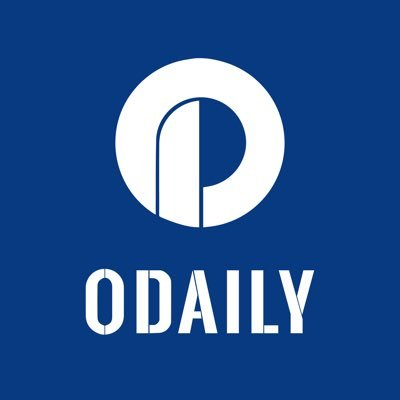Re-pledge track cooling: the transformation and breakthrough of the head project
Original title: "EigenLayer and Ether.fi are both transforming, and they can't continue to pledge the track business?" 》
Original author: Fairy, ChainCatcher
Original editor: TB, ChainCatcher
In the first half of 2024, the concept of secondary income set off a boiling market, and "re-staking" once became the core topic that swept the crypto ecosystem. With the rise of EigenLayer, projects such as Ether.fi and Renzo have emerged one after another, and re-staking tokens (LRTs) have blossomed everywhere.
However, now the two leading projects of the track have chosen to transform:
-
Ether.fi announced its transformation into a new crypto bank (Neobank), and plans to launch cash cards and staking services for users in the United States;
-
Eigen Labs announced a 25% layoff of its workforce to reorganize its resources and focus fully on its new product, EigenCloud.
The once fiery "re-pledge" is now ushering in a turning point. Does the strategic adjustment of the two leading companies indicate that this track is failing?
Emergence, boom and clearing
In the past few years, the re-pledge track has experienced a cycle from concept testing to capital intensive influx.
According to RootData data, more than 70 projects have been born in the re-pledge track. The Ethereum ecosystem's EigenLayer is the first project to bring the ReStaking model to the market, and has spawned a collective explosion of liquidity repledge protocols such as Ether.fi, Renzo, and Kelp DAO. Subsequently, new architecture projects such as Symbiotic and Karak also appeared one after another.
In 2024, the number of fundraising events surged to 27, attracting nearly $230 million in the whole year, making it one of the hottest tracks in the crypto market. Entering 2025, the pace of financing will begin to slow down, and the overall heat of the track will gradually cool down.
At the same time, the track shuffle accelerated. So far, 11 projects, including Moebius Finance, goTAO, and FortLayer, have been shut down, and the early bubble has gradually been cleared.
At present, EigenLayer is still the dominant player in the track, with a TVL of about $14.2 billion, accounting for more than 63% of the industry's market share. In its ecosystem, Ether.fi has about 75% of the share, Kelp DAO and Renzo have 12% and 8.5%, respectively.
Narrative weightlessness: a cooling signal behind the data
As of today, the total TVL of re-staking protocols is about $22.4 billion, which is down 22.7% from the all-time peak of about $29 billion in December 2024. Although the overall lock-up volume is still high, the growth momentum of re-staking has shown signs of slowing down.
Source: Defillama
The decline in user activity has been even more significant. According to The Block, the number of daily active depositors for Ethereum liquidity re-staking has plummeted from a peak of thousands in July 2024 to just over 30 currently, while the number of daily unique deposit addresses for EigenLayer has even dropped to single digits.
Source: The Block
From a validator perspective, the appeal of restaking is also waning. Currently, Ethereum has less than 3% of daily active re-staking validators compared to regular staking validators.
In addition, the token prices of projects such as Ether.fi, EigenLayer, and Puffer all retraced more than 70% at high points. On the whole, although the re-pledge track still retains a certain volume, user activity and enthusiasm for participation have declined significantly, and the ecology is falling into a state of "weightlessness". The narrative-driven effect has weakened, and the growth of the track has entered a bottleneck period.
Transformation of the head project: can't do the business anymore?
When the "airdrop period dividends" fade and the track heat subsides, it is expected that the yield curve will tend to flatten, and re-staking projects will have to face the torture: how can the platform achieve long-term growth?
Ether.fi, for example, earned more than $3.5 million in two consecutive months at the end of 2024, falling back to $2.4 million in April 2025. In the reality of slowing growth momentum, it may be difficult for a single re-staking function to support a complete business story.
It was also in April that Ether.fi began to expand its product boundaries and transform into a "new type of crypto bank", building a closed loop of financial operations through real-world scenarios such as "bill payment, payroll, savings and consumption". The dual-track combination of "cash card + re-pledge" has become a new engine for it to try to activate user stickiness and retention.
Different from Ether.fi's "application layer breakthrough", EigenLayer chooses to refactor more at the strategic level of infrastructure.
On July 9, Eigen Labs announced that it would lay off about 25% of its workforce and focus its resources on EigenCloud, a new product developer platform, which attracted a new $70 million investment from a16z. EigenCloud integrates EigenDA, EigenVerify, and EigenCompute in an attempt to provide a common trust infrastructure for on-chain and off-chain applications.
The transformations of Ether.fi and EigenLayer, although they have different paths, essentially point to two solutions to the same logic: to change "re-staking" from an end-point narrative to a "start-up module", and from an end in itself to a means to build more complex application systems.
Re-staking is not dead, but its "single-threaded growth model" may be difficult to continue. Only when it is embedded in a more scalable application narrative can it have the ability to continue to attract users and capital.
The mechanism design of the re-pledge track to ignite market enthusiasm with "secondary income" is now looking for a new landing point and vitality in a more complex application map.
Link to original article
